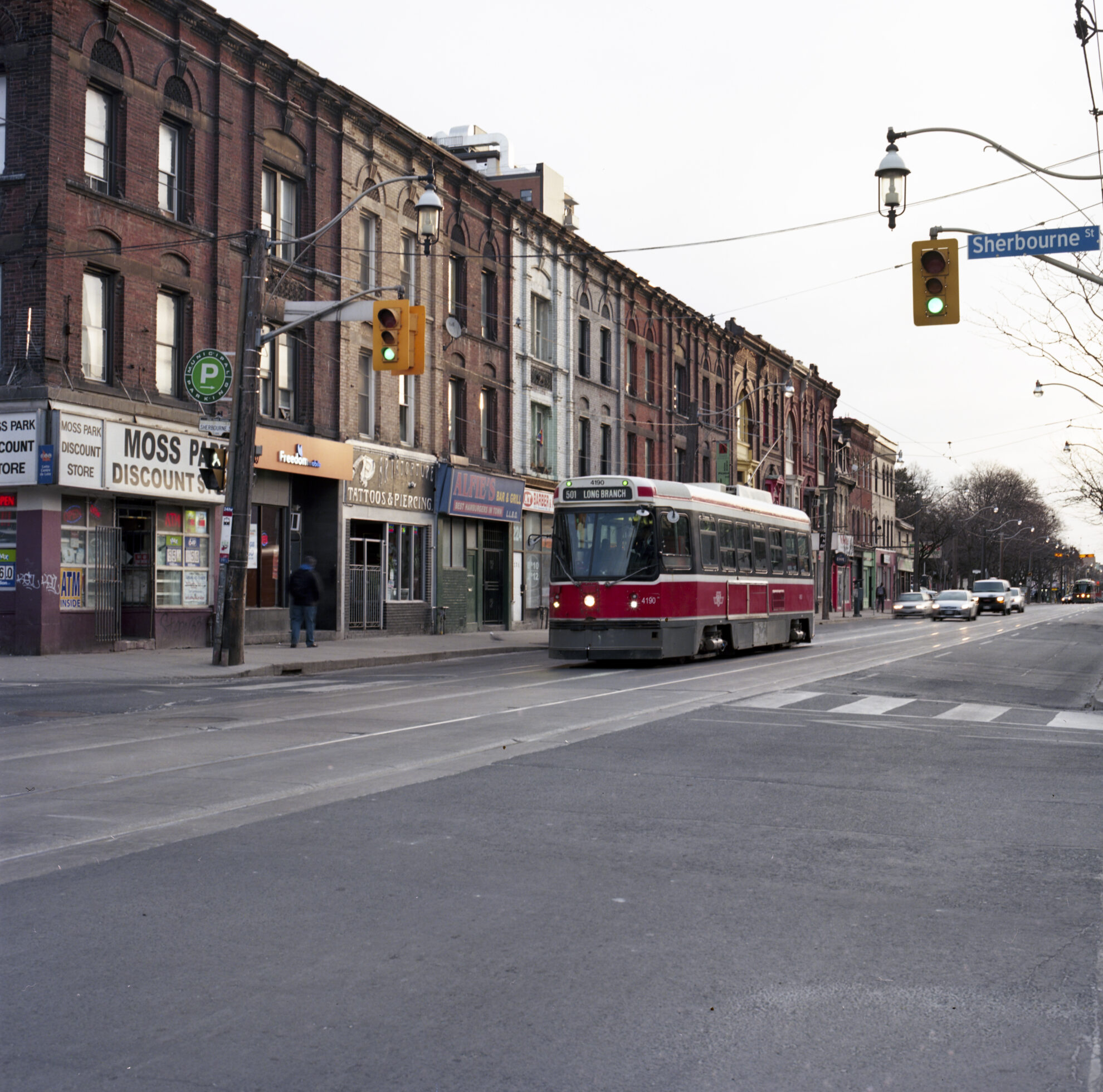Andre Bermon, Publisher –
On December 4, members of the Historic Queen Street East Business Improvement Area gathered for their first annual general meeting in 16 years.
Established in 2006, the BIA fell into dormancy following back-to-back failed budget votes at the 2007 and 2008 AGMs.
Revival of the Historic Queen East BIA was amply supported by the city and Ward 13 Councillor Moise, but the December 4 meeting was a major let down. For the third time in the association’s brief history, the membership failed to pass the proposed budget. According to a city spokesperson, the vote was a solid 26-4.
What does this say about the current state of Queen Street East, and why does the majority of commercial property and business owners routinely reject the pitch to fund a BIA?
There are two reasons why the Historic Queen East BIA has failed: lack of commercial properties to finance a viable budget along the strip of Queen East, from Victoria Street to River, and the unattractive offer of cleaner streets and access to municipal resources in exchange for additional tax money.
As stated in the June 2024 edition of the bridge, the biggest plots of land along the narrow BIA boundary are not commercially owned but are institutional or non-profit: the Metropolitan United Church, St. Paul’s Basilica, St. Paul’s Catholic School, St. Mike’s Hospital, Fred Victor, Good Shepherd, the Moss Park Armoury, the adjacent public park, the large Moss Park Toronto Community Housing complex and the smaller social housing townhouses.
None of these properties would be paying the BIA levy, leaving the smaller number of commercial buildings scattered along Queen East, on the hook for the bill. If commercial owners have business tenants, then the costs would be transferred via the lease – but since Covid-19 the number of empty storefronts on Queen East has grown. Vacancy rates are made worse by lack of foot traffic, particularly east of Parliament.
The approximate $130,000 budget proposed at the December 4 AGM would have cost the average commercial property owner only a few hundred dollars per year. No doubt it was a major determinant for members to vote down the budget, but clearly it wasn’t all about the money.
The vision sold to the membership was better access to municipal resources and grants to help pay for or subsidize cleaner streets, cultural events and beautification projects. BIA proponents also expected that members would get better treatment from the police.
AGM attendees who spoke to the bridge all argued it was unfair for small businesses to pay extra for services already offered by the municipality. This was reinforced by complaints that years of neglect from elected officials gave them little confidence the BIA would work in their favour.
The rift between the Queen East community and City Hall is palpable and decades old. Benefits of the city’s growth and prosperity have not been shared evenly here. Case in point is the stark difference in residential and business vitality between Corktown’s Queen and King streets, which stretch from Parliament towards River.
Systemic social issues in the Moss Park neighbourhood, which the business community is quick to blame city officials, make tensions worse. Particular ire is directed at the police, often seen as ignoring small business owners, and social services in the area whom they deem unaccountable.
Councillor Moise chose reconstituting the BIA to answer the challenges faced by the Queen East business community. Though after the budget defeat it remains defunct, a positive consequence is a renewed interest among business owners to collaborate on neighbourhood problems.
However, the councillor’s office clearly intended to ramrod the BIA through and ignore obvious signs of opposition. When the budget was voted down at the 2008 AGM, members moved to dissolve the organization, which the minutes of the meeting recorded as passing 21- 5. A similar vote also took place at the Dec 4 AGM, but no report on the proceedings have been published.
Why wasn’t the councillor’s office interested in figuring out why the BIA failed a decade and half ago? Could it have tried to pivot priorities to convince outliers of the organization’s merits?
Instead of coalescing the business community around a shared goal, efforts to enact a premature budget vote polarized owners and reignited differences along an already fragmented street.
What the failed budget vote says about Queen Street East is that the problems are far too complex for simple cookie-cutter solutions. BIAs have their place in the city, and many do well on behalf of their business constituents.
But just because something works doesn’t mean it can be applied holus bolus.
Queen East needs a tailored vision – one that fully recognizes its present problems while planning for its future. Unfortunately, that’s not what it’s getting.
On January 14, City Council approved an additional six members to the Historic Queen East BIA Board of Management.
So, City Hall is doubling down on its efforts. Expect another budget vote in the near future.




